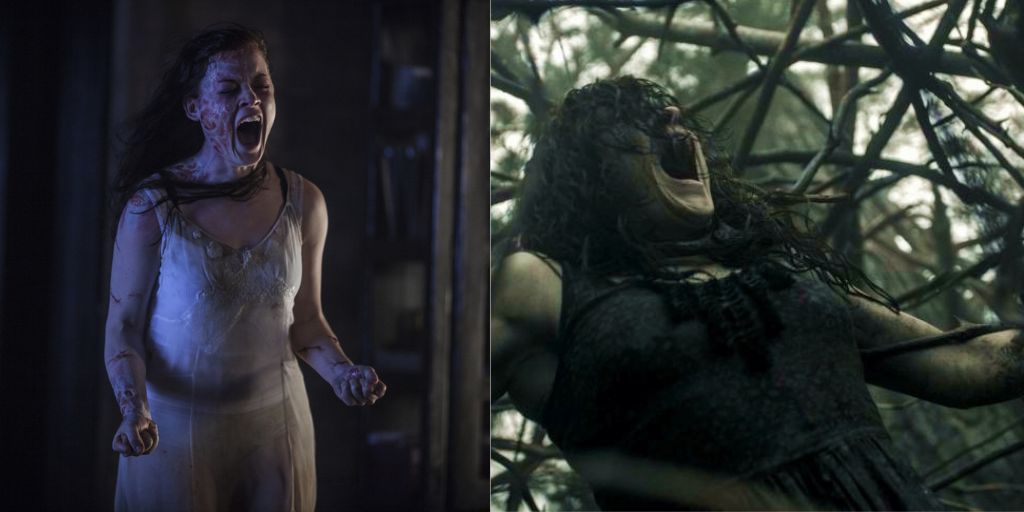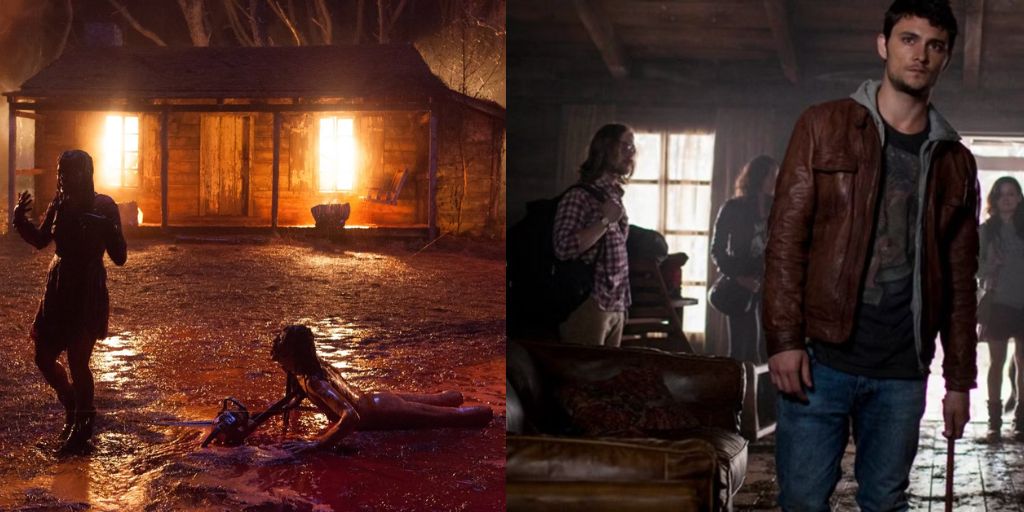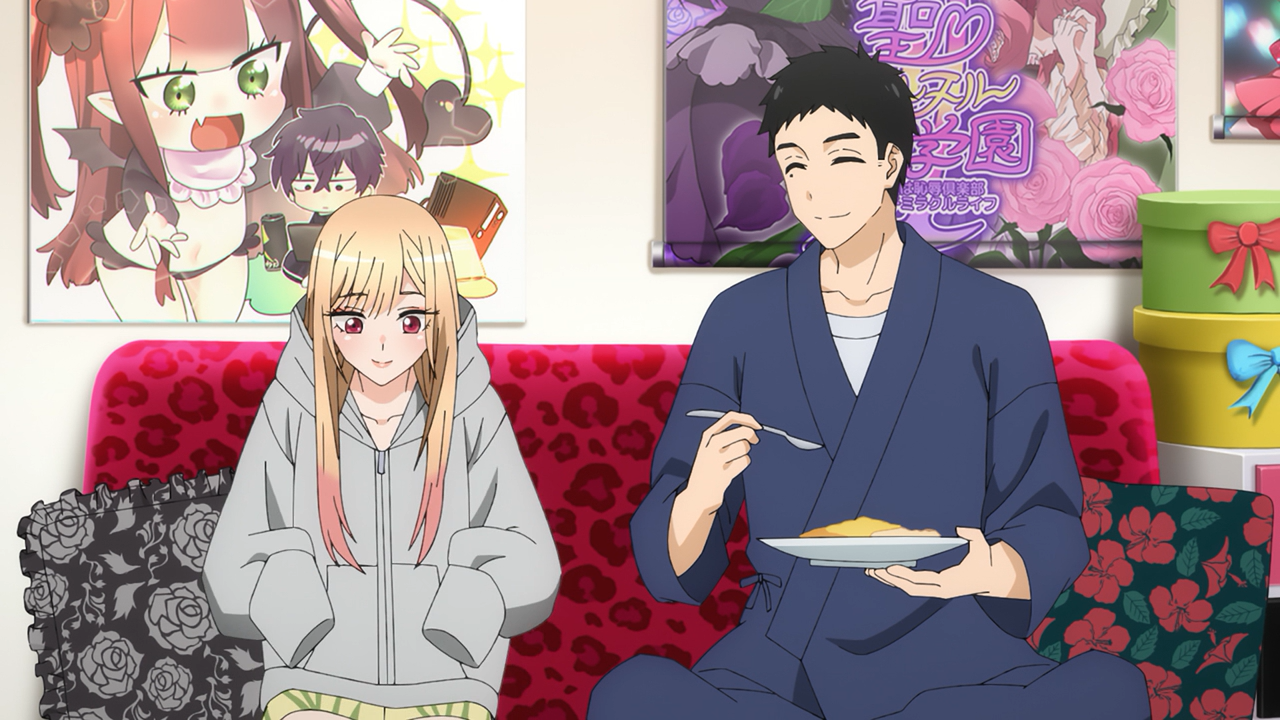After the instant classics of Alien and Aliens, the franchise has seen mixed quality in its sequels. Some were not well-received, even with Sigourney Weaver or the xenomorphs battling predators. Ridley Scott tried to improve things with Prometheus and Alien: Covenant.
Although these were better made, many fans disliked the new direction. So, what happens when previous efforts don’t work? You go back to basics. That’s what Alien: Romulus does, taking place between the first two films.
Directed by Fede Álvarez, this new entry focuses on simple horror, removing previous subplots and going back to the core idea of humans being hunted by aliens. This approach has been successful, with Alien: Romulus getting good reviews (82% on Rotten Tomatoes) and earning $108 million on its opening weekend worldwide.
This isn’t the first time Fede Álvarez took over a famous horror series late. Eleven years ago, he was given the chance to direct the Evil Dead reboot.
Sam Raimi’s Evil Dead movies are legends in horror. The first film, from 1981, used the “cabin in the woods” idea to create an intense splatter movie, introducing Ash Williams (Bruce Campbell), a hero as famous as Michael Myers and Freddy Krueger, but on the side of good.
Six years later, Evil Dead II was like a remake of the first film, but with even more gore, scares, and humor. In 1993, Army of Darkness took Ash back to medieval times. While these films are great and important, the 2013 reboot is even better.
Hear me out: for 20 years, the Evil Dead franchise was quiet. In the ’90s, there were talks of a Freddy vs. Jason film, which eventually happened in 2003, and whispers of putting Ash against both classic ’80s slasher villains. But it never happened, and Raimi and Campbell didn’t push for a fourth film.
For two decades, the franchise just sat idle. When it finally came back, it was in a reboot, which fans had mixed feelings about. Throughout the 2000s, many horror classics were rebooted, like The Texas Chainsaw Massacre, Halloween, A Nightmare on Elm Street, and Friday the 13th. Some were okay, some were bad, but none matched the originals. There was no reason to think the Evil Dead reboot would work either, especially without Raimi directing and no Bruce Campbell as Ash.
On paper, it seemed like a recipe for disaster, but Álvarez had a bold new vision. Not everyone liked the change, but that was the point. The second film had already rebooted Evil Dead. Bringing back Bruce Campbell would have felt like a nostalgic cash grab.

Instead, Álvarez chose to tell a new story. This new Evil Dead didn’t try to relive past glories, which would have been impossible. The new Halloween films showed that even a great actress like Jamie Lee Curtis couldn’t save a film that didn’t live up to the original. Ash deserved better. Thankfully, we got the Ash vs Evil Dead TV series, which gave his character a proper farewell. It was a good format for an extended story.
The 2013 Evil Dead also removed the humor. While the original films had their share of jokes, Álvarez’s version was straight horror. It aimed to be pure nightmare fuel, making viewers squirm and look away in terror.
Many horror films use humor to give the audience a break, but Álvarez chose not to. Ash’s humor was unique, and replacing it with another character’s jokes would have felt cheap. Instead, Álvarez focused on the horror, keeping the tension high.
The 2013 film is known for its extreme use of fake blood. It set a record with 70,000 gallons of fake blood, 50,000 of which were used in just one scene. This surpassed the original trilogy’s gore by far. While the film provided the gore fans wanted, it also had more.
The practical effects are some of the best in horror, with no CGI except for a fire scene. This focus on realism makes the horror more intense. The original trilogy used practical effects too, but some, like the stop-motion dancing Linda in Evil Dead II, looked less real. The 2013 film’s effects are extremely realistic, making scenes like self-mutilation deeply unsettling.
The reboot’s score by Roque Baños also stands out. It’s not just chilling but grand and powerful, making the film feel epic. A great score can enhance a film’s impact, but characters and story are important too.
Although Bruce Campbell isn’t in the reboot, Jane Levy takes on the role of the new hero. Levy, who was only 23 at the time, was a great choice because she wasn’t a well-known star. At the time, she was in the ABC series Suburgatory, but it wasn’t very popular. Levy had only been in two other feature films. Her casting helped keep the horror believable.
Levy plays Mia Allen, a heroin addict whose friends and brother take her to a cabin to help her through withdrawal. Mia is not a typical final girl. She is complex and not easy to root for until she believes in herself. Her relationship with her brother, David (Shiloh Fernandez), is a strong part of the story, full of unspoken emotions.
Even without demons, their story is powerful. Levy’s portrayal of the demon is very different from her human character, making her frightening. The movie draws a parallel between personal demons (like addiction) and supernatural evil.

The 2013 film starts with a shocking scene and ends with another intense moment. In the beginning, a possessed girl is set on fire by her father. At the end, David sacrifices himself for Mia, who then battles her evil doppelgänger. Mia uses a chainsaw to defeat the demon in a bloody climax. This scene is one of the goriest ever filmed. As the blood pours out, Mia is reborn, free from her demons, both literal and metaphorical.
Evil Dead Rise (2023) continued the franchise with a new setting, a high-rise apartment, which brought a fresh perspective. However, the 2013 reboot stays original by using the familiar cabin setting. This choice helps make the film feel fresh, despite being set in a well-known location.
Álvarez’s film gives fans what they want but in a new way. The Evil Dead reboot has familiar elements but tells a different story with a new tone. While the original trilogy is fun, the 2013 reboot aims for a more intense horror experience that might leave viewers impressed and disturbed. Evil Dead Rise was also great, but it didn’t surpass what Fede Álvarez achieved.
The 2013 Evil Dead reboot stands as a powerful example of how to successfully reinvigorate a beloved horror franchise. Fede Álvarez took bold risks, stripping away the humor and nostalgia that defined the original trilogy, and instead delivered a raw, terrifying experience that still honored its roots.
By focusing on a darker, more serious tone and utilizing practical effects that are both gruesome and realistic, Álvarez created a film that resonates deeply with both new audiences and longtime fans. Jane Levy’s performance as Mia added a fresh, emotional depth to the story, making her character’s struggle both relatable and harrowing.
The reboot didn’t just revive the franchise—it redefined it, proving that horror can grow while still delivering the visceral scares that fans crave. As Evil Dead continues to grow, the 2013 reboot will be remembered as a pivotal moment that set a new standard for horror reimaginings.




